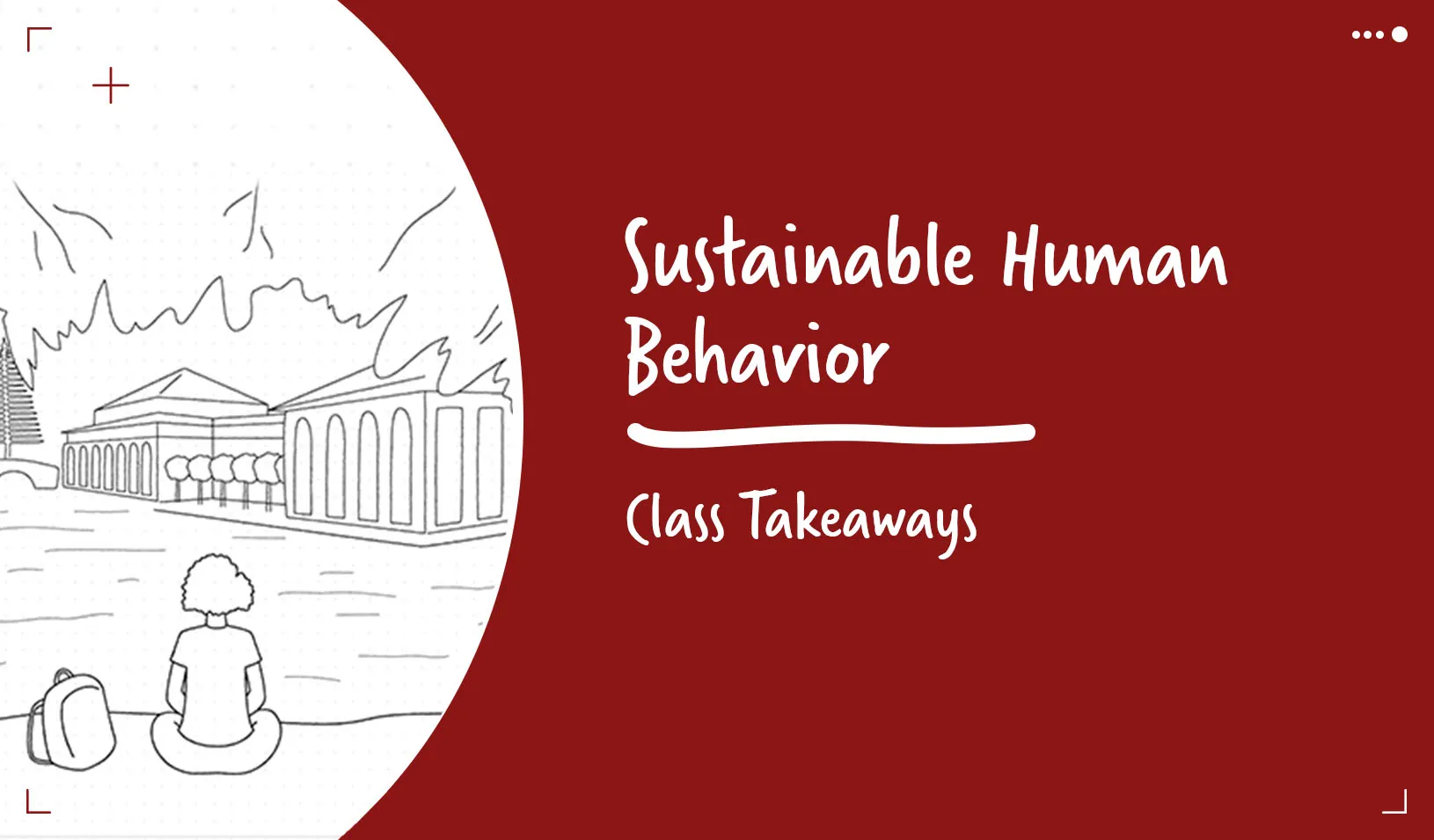Cultivating a sustainable life goes beyond just thinking about our environmental impact — it’s about how we use our time, build relationships, and notice the beauty in everyday moments.
In their course Sustainable Human Behavior, marketing professors Jennifer Aaker and Szu-chi Huang teach students how to live with greater intention and purpose. Here, they share five insights you can put into action right away.
Full Transcript
Jennifer Aaker: Hi. I am Jennifer Aaker, a behavioral scientist and the General Atlantic Professor at Stanford GSB.
Szu-chi Huang: And I’m Szu-chi Huang. I’m a motivation scientist and an associate professor at Stanford GSB as well.
Jennifer Aaker: Together we teach a course called Sustainable Human Behavior. It’s offered at the GSB and the Doerr School of Sustainability. The course is focused on how to create a sustainable life, foster healthy relationships, and promote a sustainable planet.
Szu-chi Huang: We have five insights from our class to share with you today.
Jennifer Aaker: Multipliers are activities that allow you to achieve more than one meaningful goal. Because time is our most precious resource, multipliers can help us tackle time poverty, this feeling we don’t have enough time in life. For example, I often do yoga with a friend to exercise and strengthen social connections or volunteer to charity with my daughter to strengthen our relationship, but also have an impact in the world. Multipliers are meaningful because you’re not multitasking. It’s doing one activity that serves multiple meaningful goals at the same time, so you’re very present. To lead a sustainable life, we need to use time with intent. Find your multipliers to savor each activity you do and make your life more sustainable.
Szu-chi Huang: Beauty is traditionally thought of as the aesthetics of objects. Our research shows that beauty can apply to experiences as well. Many beautiful moments happen throughout our day, like hearing laughter from loved ones, feeling the sun’s warmth, or overcoming a challenge. These beautiful moments jumpstart ripple effects in our neural network, awakening us to richer sensory experiences and creating positive, enduring memories. An exercise you can start doing is to take a moment each day to notice one beautiful moment. Our longitudinal studies show that people who journal about their beautiful moments for a few days in a row had 137% richer visual perception of them, and 16% higher desire to preserve these memories even one month after the study. The repeated practice of noticing beautiful moments is an investment in our cognitive health and well-being.
Jennifer Aaker: We once interviewed Michael Mina, the renowned chef of 40 award-winning restaurants. For him, a beautiful moment is in the kitchen when he goes in and he sees perfectly cut tomatoes. There’s no spillage. Sharp knife is being used. There’s a clean dishcloth underneath, and that signifies a harmonious team is working in flow. Tomatoes can also symbolize elements in your work and your personal networks because they’re indicators that help you gauge whether you and your team are working in flow in a way that’s beautiful. By cultivating a keen awareness of our own feelings, we can also better understand the emotions of others. So tracking these tomatoes in our relationships allows us to create beautiful moments together where everything just clicks.
Szu-chi Huang: To alter our neural network and shape relationships with others, we need to practice these principles and ask these questions every day. How are you using your time today? Can you make an activity into a multiplier so it achieves multiple goals at once? Is there a beautiful moment that you can savor from this multiplier activity? And what are your tomatoes today, the signal of beauty that you and those around you are working together in a flow? By asking these questions daily, the less to which you see the world will change profoundly.
Jennifer Aaker: Throughout history, bird songs signal places where human flourishing is possible. We are part of nature, not separate from it. So to find and protect beauty in our planet, we need to start listening to bird songs to seek alignment with the environment around us. In our class, we ask our students to go explore the Stanford campus to find a location where they feel aligned with the planet. Then we use AI to analyze their responses and create a collective image. This illustrates our students’ feelings of alignment with campus and our planet. Find that time and place where you feel most aligned with the planet. Go there to create your beautiful moment and share it with those around you.
Szu-chi Huang: My life is still fast-paced, and I’m still busy. But as I take a moment for beauty each day, I’m becoming more mindful and aware of how I spend my time.
Jennifer Aaker: Instead of getting overwhelmed with challenges in life, I try to find beauty in the chaos, and instead of hoping to create a happy life, I hope to create a beautiful life.
Szu-chi Huang: We hope these takeaways will help you live a more beautiful, fulfilling, and sustainable life.
Jennifer Aaker: One fun thing about co-teaching especially with Szu-Chi is how we integrate both of our research streams into the class.
Szu-chi Huang: Together we create a class that I can never imagine, and that’s really, really fun for me.
For media inquiries, visit the Newsroom.






